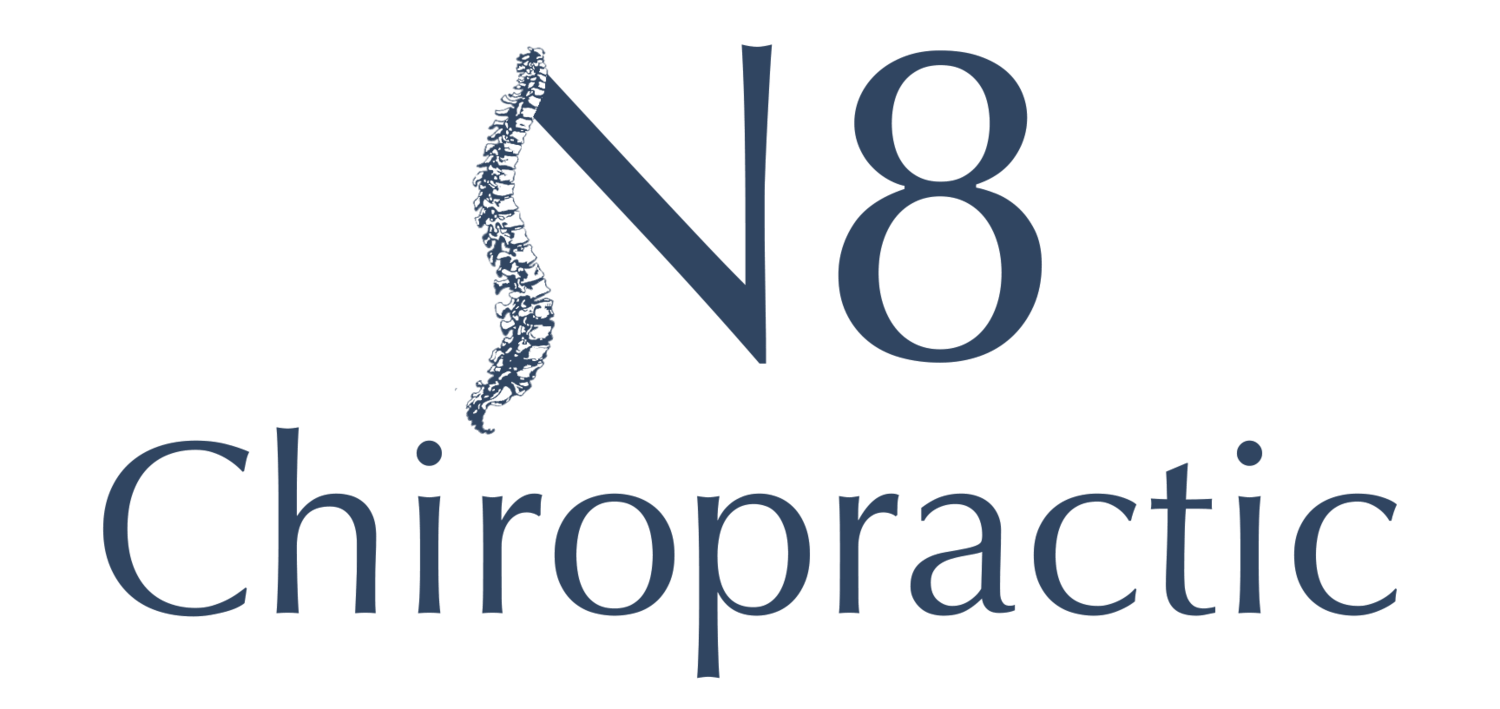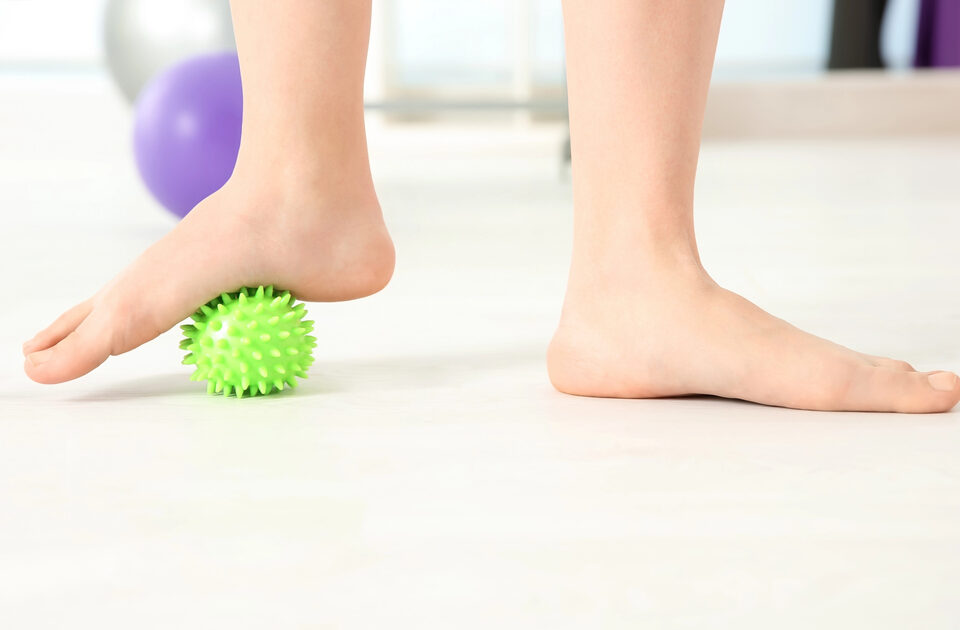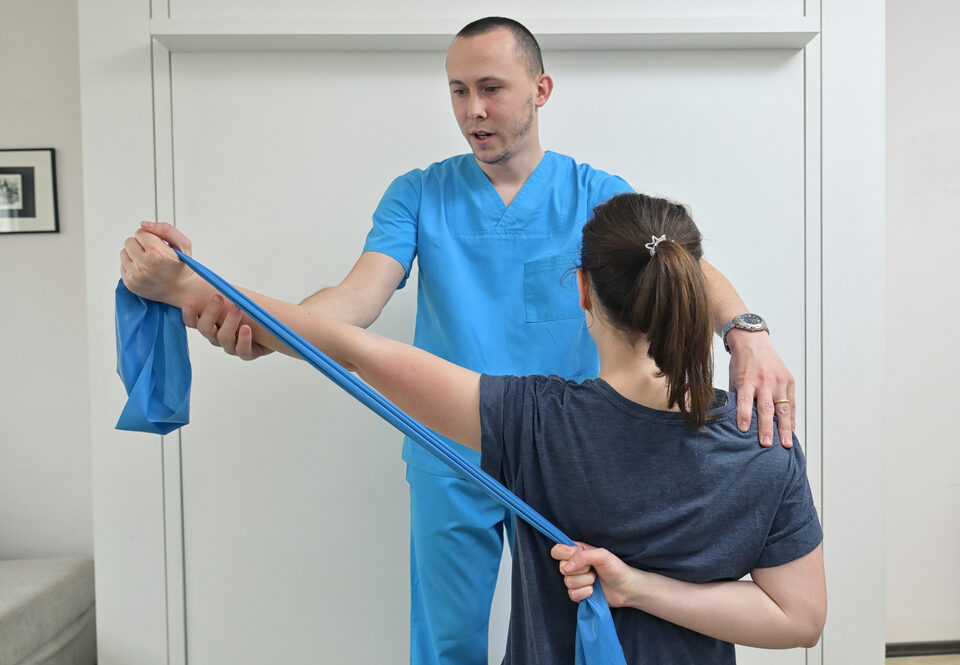


Wrist Pain – Symptoms and Causes
May 14, 2023


Finding a Good Chiropractor in Ohio to Treat Your Headaches
July 23, 2023In our modern sedentary lifestyle, many individuals spend prolonged hours sitting, whether it be for work, studying, or leisure activities. Unfortunately, this lifestyle often leads to various health issues, and one of the most common complaints is mid-back pain. The discomfort experienced in the mid-back region can significantly impact daily life and overall well-being. However, understanding the causes and implementing practical strategies can alleviate mid-back pain and promote a healthier, pain-free lifestyle.
Understanding Mid Back Pain
The mid-back, also known as the thoracic spine, consists of twelve vertebrae that connect the upper back (cervical spine) to the lower back (lumbar spine). It plays a vital role in maintaining posture, stability and protecting vital organs. When the mid-back experiences pain, it can be attributed to various factors:
- Poor Posture: Slouching or hunching forward while sitting can strain the muscles and ligaments in the mid back, leading to pain and discomfort.
- Lack of Movement and Muscular Imbalance: Prolonged sitting without breaks or exercise can result in muscle imbalances and weakness in the back, leading to pain and stiffness.
- Ergonomic Factors: An improperly set up workstation, such as an unsupportive chair, an incorrectly positioned desk, or a monitor, can contribute to mid-back pain.
- Stress and Tension: Emotional and psychological stress can cause muscle tension and tightness in the mid-back region, leading to pain.
- Underlying Medical Conditions: In some cases, mid-back pain may be a symptom of underlying medical conditions such as herniated discs, osteoarthritis, or spinal abnormalities.
Ergonomic Optimization
To reduce mid-back pain, it is essential to optimize your workstation to promote proper posture and support:
A. Setting Up a Healthy Workstation
- Chair Selection and Adjustments: Choose a chair that provides adequate lumbar support and adjust the height, seat angle, and backrest to maintain a neutral spine position.
- Desk and Computer Setup: Ensure your desk is at the correct height to maintain proper alignment of your arms and wrists while typing. Position your computer monitor at eye level to avoid straining your neck and upper back.
- Proper Placement of Keyboard and Mouse: Place your keyboard and mouse within easy reach to prevent excessive reaching and mid back and shoulders straining.
- Monitor Positioning: Position your monitor at a comfortable distance and angle to maintain good posture and reduce strain on the mid back and neck.
- Utilizing Supportive Accessories: Consider using a lumbar roll or back support cushion to maintain the natural curve of your spine while sitting.
B. Incorporating Regular Breaks and Movement
- Microbreaks and Stretching Exercises: Take short breaks every 30 minutes to stand up, stretch, and perform simple exercises to relieve tension in the mid back.
- Standing and Walking Breaks: Alternate between sitting and standing throughout the day to reduce prolonged pressure on the mid back. Take short walks during breaks to promote blood circulation and muscle activity.
- Desk-Based Exercises: Perform shoulder rolls, neck stretches, and gentle twists to mobilize the mid back and alleviate muscle stiffness.
Improving Posture
Maintaining good posture is crucial for preventing and alleviating mid-back pain. Focus on the following:
A. Maintaining a Neutral Spine Position
-
- Sitting with Proper Alignment: Sit with your back against the chair, shoulders relaxed, and feet flat on the floor. Avoid slouching or hunching forward.
- Supportive Pillows and Cushions
- Lumbar Roll or Back Support: Place a lumbar roll or a rolled-up towel behind your lower back to maintain the spine’s natural curve and provide additional support.
B. Strengthening and Stretching Exercises
- Core Strengthening: Engage in exercises that target the core muscles, such as planks, bridges, and abdominal crunches. A strong core helps support the mid back and improve posture.
- Mid Back Stretching: Perform gentle stretches to release tension in the mid back. Examples include seated twists, cat-cow stretch, and thoracic spine extensions.
- Shoulder and Neck Exercises: Incorporate exercises to strengthen and stretch the muscles around the shoulders and neck, as tension in these areas can contribute to mid-back pain. Shoulder rolls, neck stretches, and chin tucks are beneficial.
Lifestyle Modifications
Adopting healthy lifestyle habits can have a significant impact on reducing mid-back pain. Consider the following:
A. Regular Physical Activity
- Aerobic Exercises: Engage in cardiovascular activities like walking, swimming, or cycling to improve blood circulation, strengthen muscles, and promote overall spinal health.
- Strength Training: Include exercises that target the back, core, and upper body muscles to improve posture, and stability, and reduce the risk of muscle imbalances.
- Flexibility and Mobility Exercises: Incorporate stretching and mobility exercises, such as yoga or Pilates, to enhance flexibility, reduce muscle tightness, and promote a healthy range of motion.
B. Stress Management Techniques
- Mindfulness and Meditation: Practice mindfulness techniques to reduce stress, promote relaxation, and alleviate muscle tension.
- Deep Breathing Exercises: Deep breathing exercises help relax the body and mind, reducing stress and tension in the mid-back region.
- Yoga or Tai Chi: These mind-body practices combine movement, stretching, and relaxation techniques, which can improve posture, alleviate stress, and promote overall well-being.
Seeking Professional Help
If mid back pain persists or worsens despite self-care efforts, it is advisable to seek professional help. A healthcare provider can offer guidance, diagnose underlying conditions, and provide appropriate treatment options:
A. When to Consult a Healthcare Provider:
If the pain is severe, accompanied by other symptoms like numbness or weakness, or persists for an extended period, it is essential to consult a healthcare provider.
B. Treatment Options:
Depending on the cause and severity of the mid-back pain, healthcare providers may recommend the following:
- Physical Therapy: A physical therapist can provide targeted exercises, manual therapy, and ergonomic guidance to alleviate pain and improve posture.
- Chiropractic Care: Chiropractors specialize in spinal manipulation and adjustments to relieve pain and restore spinal alignment.
- Massage Therapy: Massage therapy can help reduce muscle tension, promote relaxation, and improve blood circulation in the mid-back area.
- Other Alternative Therapies: Acupuncture or other complementary therapies may be suggested based on individual needs and preferences.
Conclusion
Mid-back pain resulting from prolonged sitting can be debilitating, but it is not a condition that should be accepted as an inevitable part of modern life. By implementing the strategies discussed in this article, individuals can significantly reduce mid-back pain, improve posture, and enhance overall well-being. Remember to optimize ergonomics, incorporate regular breaks and movement, focus on improving posture, make necessary lifestyle modifications, and seek professional help when needed.
If you’re experiencing persistent mid-back pain or would like expert guidance on managing your condition, consider contacting N8 Family Chiropractic. Our team of skilled chiropractors specializes in spinal health and can provide personalized care to address your specific needs. In addition, chiropractic adjustments, therapeutic exercises, and ergonomic recommendations can help you alleviate mid-back pain and promote long-term wellness.
Don’t let mid-back pain hinder your daily life. Instead, take the necessary steps to find relief and regain your quality of life. Contact N8 Family Chiropractic today to schedule a consultation and take the first step towards a healthier, pain-free future.
References:
https://www.mayoclinic.org/diseases-conditions/back-pain/symptoms-causes/syc-20369906
https://www.health.harvard.edu/pain/back-pain-at-work-preventing-pain-and-injury
https://www.acatoday.org/Patients/Health-Wellness-Information/Posture
https://my.clevelandclinic.org/health/diseases/16869-back-pain
https://orthoinfo.aaos.org/en/diseases–conditions/low-back-pain/





